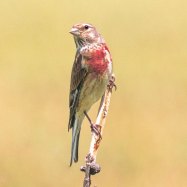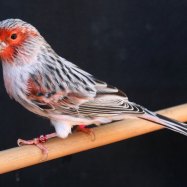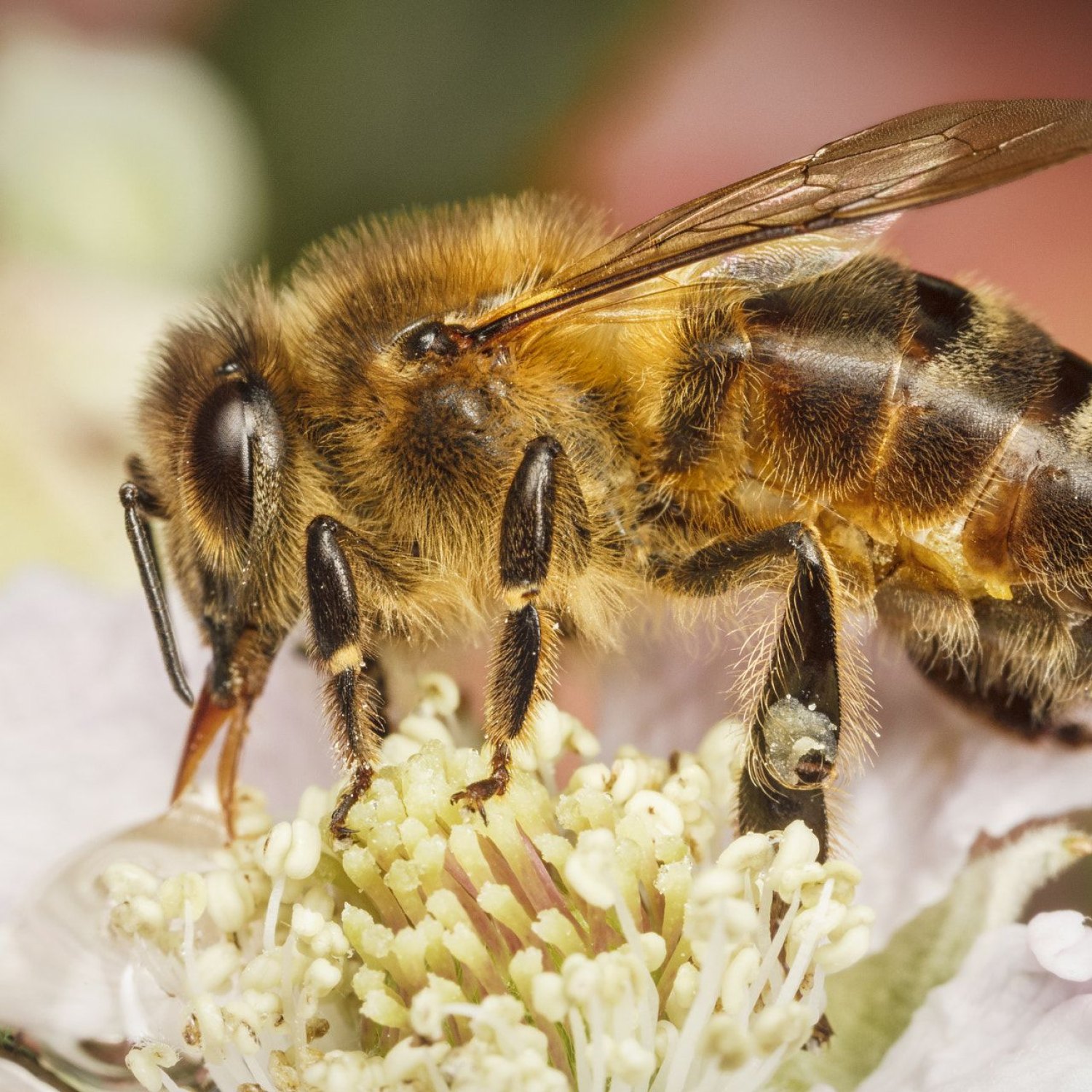
Honey Bee
Approximately 1.2 to 1.6 cm (0.5 to 0.6 inches)
Did you know that honey bees are vital pollinators for our food supply? These tiny creatures, measuring 1.2 to 1.6 cm in length, can be found on every continent except Antarctica. Classified under the family Apidae, honey bees have a slender and long body shape, making them agile and efficient. So next time you see a busy bee, remember they're hard at work ensuring our ecosystem thrives. #savethebees #honeybees #pollinators
Animal Details Summary:
Common Name: Honey Bee
Kingdom: Animalia
Habitat: Various habitats including forests, meadows, gardens, and agricultural areas
The Amazing Honey Bee: Nature's Tiny Pollinators
When we think of bees, the first thing that comes to mind is often the delicious and sweet honey they produce. But did you know that honey bees are more than just honey-makers? These fascinating creatures are essential pollinators and play a crucial role in our ecosystem. Today, we'll dive deep into the world of honey bees and discover what makes them so unique and important.The Taxonomy of Honey Bees
Scientifically known as Apis mellifera, the honey bee belongs to the Kingdom Animalia, class Insecta Honey Bee. They are a part of the order Hymenoptera and the family Apidae. Along with wasps, ants, and other types of bees, honey bees are a subgroup of insects known as Hymenopterans. They have a unique body shape, slender and long, with three main body sections: the head, thorax, and abdomen.Habitat and Distribution
Honey bees are incredibly adaptable creatures and can thrive in a wide range of habitats. These include forests, meadows, gardens, and agricultural areas. They can also be found in urban areas, making use of any available green spaces. Globally, honey bees are found on every continent except Antarctica, making them one of the most widely distributed insect species. However, their country of origin is uncertain, though it is believed to be Africa.Interestingly, honey bees are social insects and live in colonies, consisting of a queen, drones, and worker bees Horned Lizard. A hive can house anywhere from 10,000 to 80,000 bees, depending on the season.
Feeding Method
As pollinators, honey bees play a crucial role in plant reproduction. They gather nectar and pollen from flowers and carry them back to their hives, where they are used to make honey for food. Nectar is a sugary substance produced by plants to attract pollinators, while pollen contains protein and other nutrients.The foraging worker bees use their long proboscis to suck nectar from the flowers, storing it in their honey stomachs. They also collect pollen in specialized structures on their hind legs called pollen baskets. During their travels, honey bees also transfer pollen from one flower to another, aiding in the fertilization process.
Physical Characteristics
Honey bees have a distinct appearance, with golden-yellow to brown coloration and dark brown bands across their bodies. They are relatively small, with an average length of 1.2 to 1.6 cm (0.5 to 0.6 inches). However, their size can vary depending on their role in the hive. Queen bees are the largest, while worker bees are the smallest and drones are slightly larger than workers.In addition to their coloring, honey bees also have two sets of wings, six legs, and large compound eyes. They also have a unique feature called the proboscis, which is a long, tube-like structure used for feeding. This specialized body part helps them gather nectar from deep inside flowers.
The Life of a Honey Bee
Honey bees have a complex life cycle, with different stages serving various purposes within the hive. The queen plays the most critical role in the colony, as she is responsible for laying eggs. A queen can lay up to 1500 eggs per day, fulfilling her duty of keeping the colony thriving.The worker bees are the smallest but busiest bees in the hive. They are responsible for tasks such as foraging for food, building the honeycomb, taking care of the larvae, and protecting the hive. Worker bees are all female and make up the majority of the colony.
The drone bees, on the other hand, are the male bees in the hive. Their primary purpose is to mate with the queen. They are larger in size and do not have stingers, unlike female bees. However, they do not have a long lifespan and are only active during spring and summer when the queen is in need of mating.
The Importance of Honey Bees
As mentioned earlier, honey bees are essential pollinators, playing a crucial role in the ecosystem. One-third of the world's food production depends on pollination, and honey bees are responsible for pollinating around 80% of crop plants, including fruits, vegetables, and nuts. Without them, our food sources would be severely impacted, and food prices would likely skyrocket.In addition to pollination, honey bees also play a significant role in the production of honey, beeswax, and other hive products. Honey is not only a delicious sweetener but also has numerous health benefits. It is rich in antioxidants and has antibacterial properties, making it an excellent alternative to artificial sweeteners.
Beeswax, another essential hive product, is used in cosmetics, candles, and even in the manufacturing of crayons and polishes.
The Threats Facing Honey Bees
Despite their crucial role in our ecosystem, honey bees face many threats that endanger their survival. One significant threat is the use of pesticides and herbicides in agriculture. These chemicals can be toxic to bees and can lead to colony collapse disorder, where entire bee colonies are wiped out.Climate change is another significant threat to honey bees. As temperatures rise, plants bloom earlier in the year, causing a mismatch in timing between when flowers produce nectar and when bees are active. This can lead to a decrease in food sources for honey bees, making it harder for them to survive.
Other threats include parasites, diseases, and habitat loss due to urban development and monoculture farming practices. These factors have contributed to a significant decline in honey bee populations worldwide, with some regions reporting a 50% decrease in the last few decades.
Ways to Help Honey Bees
The decline of honey bees has far-reaching impacts on our environment and food sources. So, what can we do to help these vital creatures? Here are a few ways you can make a difference:- Plant a variety of flowers in your garden or balcony to provide food for bees. Choose native, non-invasive plants that are rich in nectar and pollen.
- Support organic and sustainable farming practices that minimize the use of pesticides and herbicides.
- Educate others about the importance of honey bees and the threats they face. This can help raise awareness and encourage people to take action.
- Consider becoming a beekeeper and helping to maintain honey bee populations. By keeping your own hive, you can also enjoy the delicious and nutritious benefits of honey.
Conclusion
Honey bees may be small in size, but they have a significant impact on our ecosystem and our lives. These tiny pollinators make it possible for us to enjoy a diverse and nutritious food supply. However, they face numerous threats that put their survival at risk. It's up to us to take action and protect these incredible creatures so that they can continue to thrive and do the vital work they were created to do.

Honey Bee
Animal Details Honey Bee - Scientific Name: Apis mellifera
- Category: Animals H
- Scientific Name: Apis mellifera
- Common Name: Honey Bee
- Kingdom: Animalia
- Phylum: Arthropoda
- Class: Insecta
- Order: Hymenoptera
- Family: Apidae
- Habitat: Various habitats including forests, meadows, gardens, and agricultural areas
- Feeding Method: Nectar and pollen from flowers
- Geographical Distribution: Worldwide
- Country of Origin: Uncertain, believed to be Africa
- Location: Honey bees can be found on every continent except Antarctica
- Animal Coloration: Golden-yellow to brown with dark brown bands
- Body Shape: Slender and long
- Length: Approximately 1.2 to 1.6 cm (0.5 to 0.6 inches)
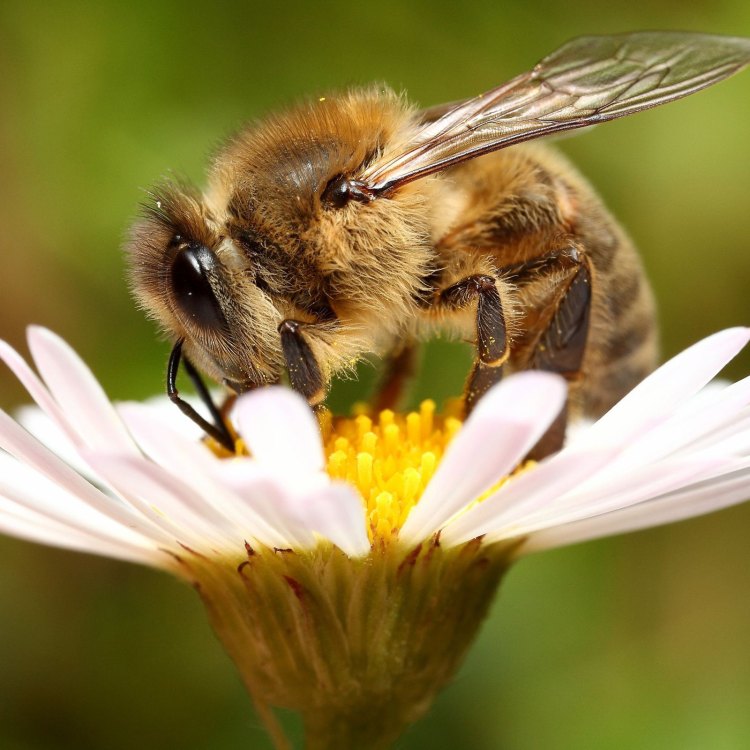
Honey Bee
- Adult Size: Approximately 1.2 to 1.6 cm (0.5 to 0.6 inches)
- Average Lifespan: Worker bees: 6 weeks to 6 months; Queen bee: Up to 5 years
- Reproduction: Sexual
- Reproductive Behavior: Queen bee mates with multiple drones
- Sound or Call: Honey bees communicate through dances and pheromones
- Migration Pattern: Non-migratory
- Social Groups: Colonies consisting of a queen, drones, and worker bees
- Behavior: Highly organized and cooperative
- Threats: Pesticides, habitat loss, climate change, diseases, parasites
- Conservation Status: Not currently endangered, but populations are declining in some regions
- Impact on Ecosystem: Important pollinators of flowering plants, contributes to biodiversity
- Human Use: Honey production, crop pollination
- Distinctive Features: Stingers, honeycomb nests
- Interesting Facts: Honey bees perform a waggle dance to communicate the location of food sources
- Predator: Birds, reptiles, insects
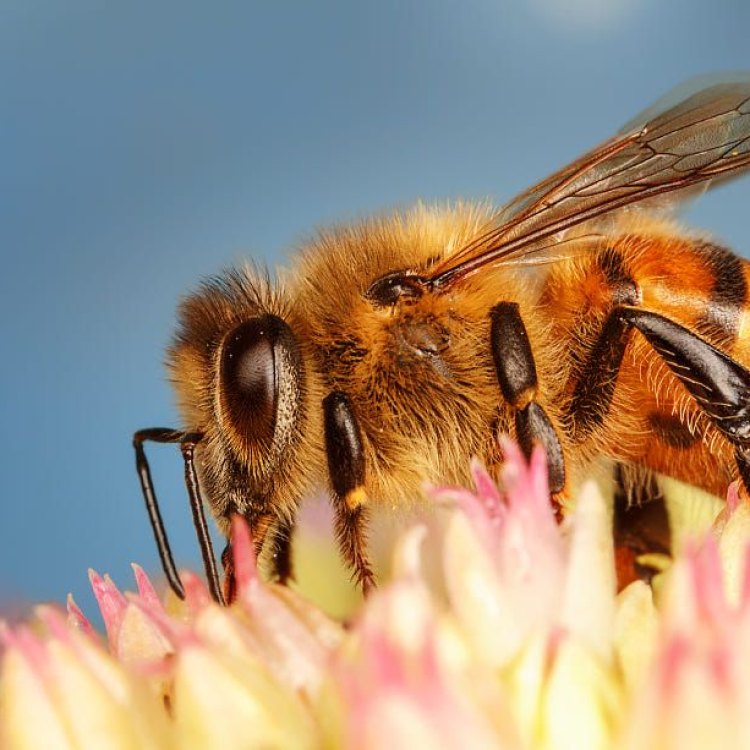
Apis mellifera
The Incredible World of the Honey Bee: A Closer Look at These Tiny Yet Powerful Insects
In a world full of fascinating creatures, the humble honey bee often gets overlooked. These small insects hold a crucial role in our ecosystem and have a complex and organized society that rivals that of any other species. From their incredible communication skills to their important role as pollinators, honey bees are truly a marvel of nature.Let's take a closer look at these buzzing creatures and discover the unique features that make them so essential to our world PeaceOfAnimals.Com.
The Basics of the Honey Bee
Before delving into the impressive capabilities of honey bees, let's start with the basics. The adult size of a honey bee ranges from approximately 1.2 to 1.6 cm (0.5 to 0.6 inches). That may seem tiny, but don't let their size fool you - honey bees are powerful creatures.There are three types of honey bees in a colony: the queen bee, the drones, and the worker bees. The queen bee is the largest and longest-living bee, with an average lifespan of up to 5 years Horse Mackerel. On the other hand, the worker bees, which are all female, typically live for 6 weeks to 6 months depending on their role in the colony. The drones, or male bees, have the shortest lifespan and are primarily responsible for mating with the queen bee.
Honey bees reproduce sexually, with the queen bee mating with multiple drones to produce offspring for the colony. And as for their distinctive feature, honey bees have a stinger, which they use as a defense mechanism when threatened.
Highly Organized and Cooperative Societies
One of the most fascinating aspects of honey bees is their highly organized and cooperative societies. Each colony consists of thousands of bees, all working together for the good of the group. The queen bee's role is crucial, as she is the only reproductive member of the colony, laying eggs that will become the next generation of bees.The worker bees have a wide range of tasks, from caring for the young to building and maintaining the hive, and foraging for food. They work together in a coordinated manner to ensure the smooth running of the colony. The drones, while important for mating purposes, do not contribute to the daily tasks of the colony.
Communication Through Dance and Pheromones
Honey bees have a unique way of communication – through dance and pheromones. When worker bees discover a new food source, they return to the hive and perform a waggle dance to communicate the location of the food to other bees. The direction and duration of the dance convey the distance and direction of the food source. This complex form of communication allows the colony to efficiently gather food and resources.In addition to dances, honey bees also use pheromones, which are chemical substances released by an individual that can affect the behavior of others in the same species. Pheromones are used to signal danger, attract mates, and maintain the social structure of the colony.
Non-Migratory Patterns and Threats to Honey Bees
Unlike some other species of bees, honey bees have a non-migratory pattern. They typically build their hives in a permanent location and do not move to a new location with changing seasons. This makes protecting their habitat and resources vital to their survival.Unfortunately, honey bees face numerous threats, with the most significant being habitat loss, pesticides, climate change, diseases, and parasites. These threats have caused a decline in honey bee populations in many regions, making their conservation an urgent matter.
The Importance of Honey Bees to Our Ecosystem
Honey bees may be small in size, but they have a massive impact on our ecosystem. As pollinators, they play a crucial role in the reproduction of flowering plants, contributing to the biodiversity of our world. Without honey bees, many plants would not be able to produce fruits and seeds, which are vital food sources for other animals.Moreover, honey bees also play a significant role in crop pollination, making them crucial for agriculture. They are responsible for pollinating numerous crops, including fruits, vegetables, and nuts, which contribute to one-third of the world's food production.
The Human Use of Honey Bees
Aside from their role in pollination, honey bees have been utilized by humans for thousands of years for their production of honey. Beekeepers have been harvesting honey from colonies for consumption and other uses, such as making beeswax, for centuries.In recent years, honey production has become big business, with honey being used not only as a natural sweetener but also for its medicinal properties.
Distinctive Features and Interesting Facts About Honey Bees
Aside from their stingers, honey bees are also known for their distinctive honeycomb nests, which are made out of beeswax. These intricate structures provide shelter for the colony and are filled with hexagonal cells that store honey, pollen, and bee larvae.Moreover, honey bees have some interesting behaviors that are sure to fascinate anyone. Aside from their waggle dance, honey bees also perform a tremble dance to signal to other bees that they have found a particularly rich food source.
Interestingly, honey bees also have a collective decision-making process, where they gather and assess information to choose the best location for a new hive. This consensus-building behavior is yet another example of their highly organized and cooperative society.
Predators of Honey Bees
Like any other species, honey bees also have their fair share of predators. Birds, reptiles, and some insects, such as dragonflies and praying mantises, see honey bees as a tasty meal. Another significant threat to honey bee colonies is the destructive behavior of pests and parasites, such as Varroa mites and wax moths.The Future of Honey Bees
Despite the numerous threats they face, honey bees are currently not considered an endangered species. However, the decline in their populations in some regions is a cause for concern. It is essential to take immediate actions to protect their habitats and minimize the use of harmful pesticides to ensure the survival of these vital insects.As we continue to learn more about honey bees and their essential role in our ecosystem, let us not take these tiny but mighty creatures for granted. By understanding the unique features of honey bees and their incredible abilities, we can appreciate and protect their significant contributions to our world.
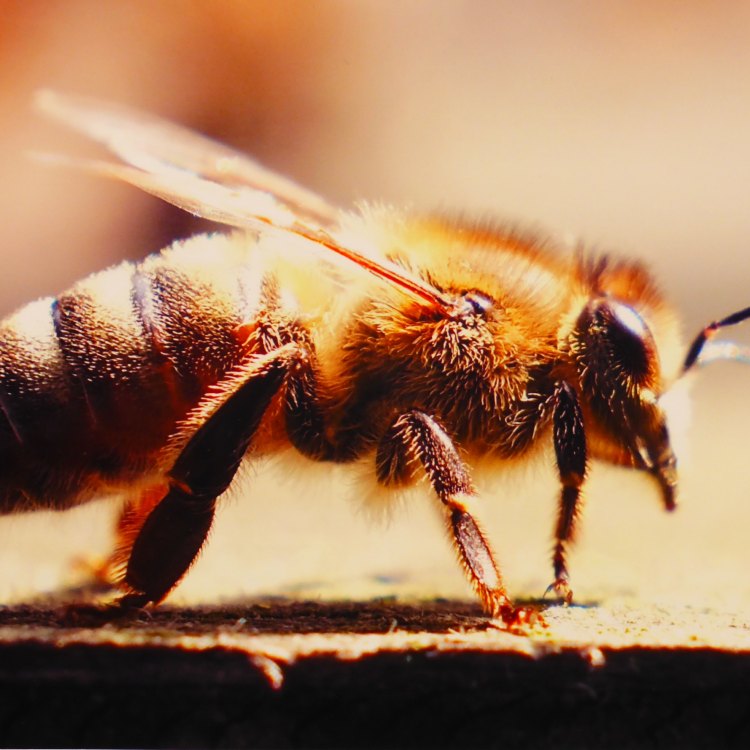
The Amazing Honey Bee: Nature's Tiny Pollinators
Disclaimer: The content provided is for informational purposes only. We cannot guarantee the accuracy of the information on this page 100%. All information provided here may change without prior notice.




